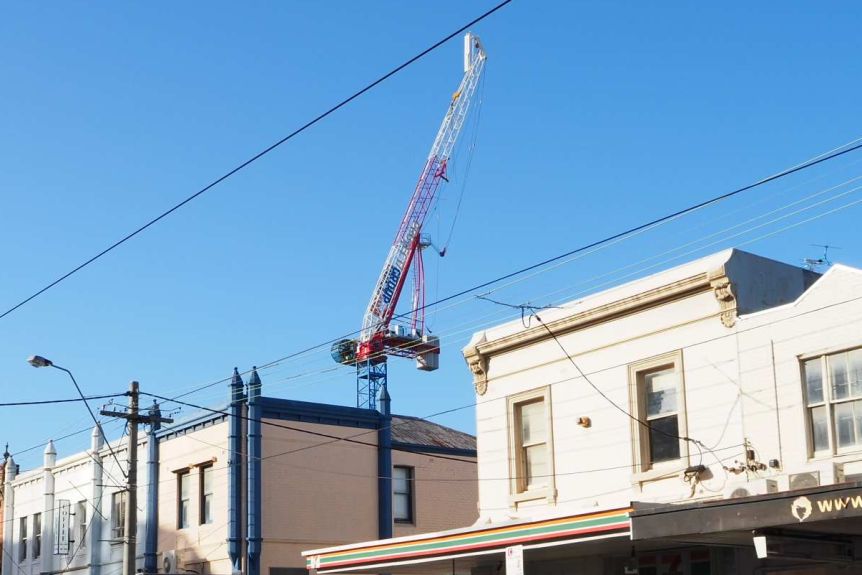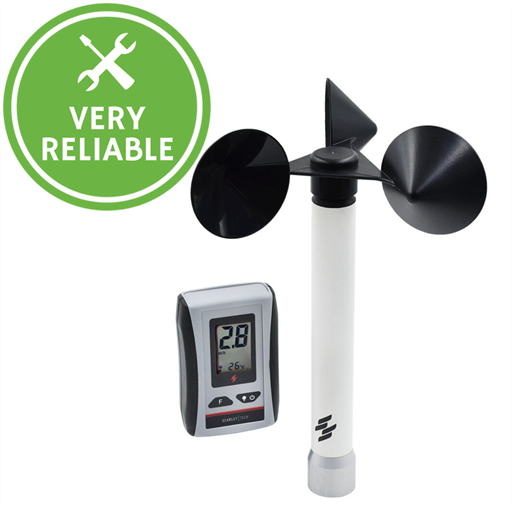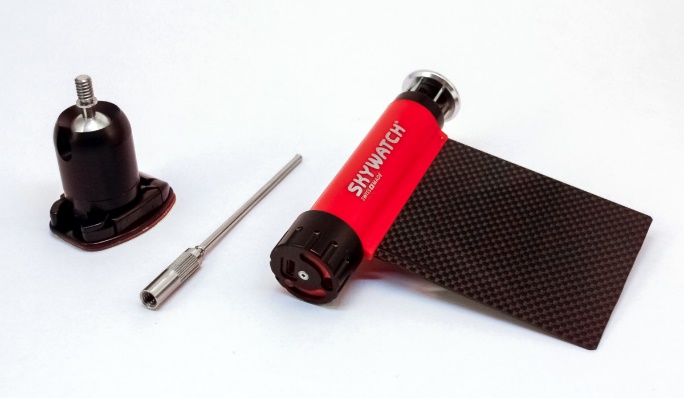Why Use an Anemometer for Cranes

Knowing the local wind speed is vital on a large scale building site. High winds can send loose materials flying at dangerous speeds, cause excessive airborne dust, as well as damage unfinished buildings, equipment, and structures. Excessive winds are particularly dangerous when cranes are involved.This article details why an anemometer is an essential tool whenever there is a crane on a building site. And as is their custom, Instrument Choice Scientists profile some of the best anemometers available today.
Cranes and Wind Speed
All cranes have a load chart that provides specifics on a crane's load-lifting capabilities. The load chart details the crane's features, how its lift capacity varies when considering the distance, together with angle and information on allowable wind speeds. The load chart is a crucial consideration while operating a crane to ensure you meet occupational health and safety guidelines on your work site.
High winds will impose extra strain on the boom, which poses a significant hazard as it can destabilise a crane rapidly. When wind speed increases and exceeds safe limits recommended by the manufacturer, there is a risk of the machine toppling over and causing a severe incident. Depending on the crane's boom length and the luffing angle, the wind speed experienced by the boom may be higher compared to the wind speed found at the cabin.

Figure 1 Damaged 30-meter crane in Melbourne caused by strong winds (Source ABC, 2018)
Direct measurements from an on-site anemometer will enable users to detect sudden changes and make quick safety decisions.
Best practice is to fix an anemometer in a position on each crane's tower that will provide an accurate wind speed reading. You must avoid shielding the fixed anemometer in any way from the wind, and ensure the location of your meter is appropriate for the type of crane. To illustrate; the Guide to Tower Cranes by Safe Work Australia states to fix anemometers on:
- Top of the A-frame on luffing tower cranes; or on
- the A-frame or machine deck hand-rail of non-luffing tower cranes.
Examples of Cup Anemometers for Cranes and Construction Sites
One of the best ways to measure windspeed on cranes and construction sites is with a cup style anemometer. While vane type anemometers are useful to obtain quick indications of wind speeds, they need to be faced directly into the wind to obtain an accurate wind speed reading. In contrast, the cups on a cup style anemometer will spin and determine wind speed regardless of wind direction.
Scarlet Wireless Anemometer
Product Code: IC-WR-3
The IC-WR-3 is a long-range, portable, wireless anemometer. The sensor sends data to the display every two seconds so you can have instant windspeed measurements anywhere within the 400-meter radius from the sensor.
Specifications
Wind Speed Range: 0.1 -50 m/s
Accuracy: ± 2%
Functions: Current, Average, and Maximum wind speeds
Wind Speed Units: m/s, km/h, knots, and mph
Alarms: Yes - Sound alarm at user-selectable exceeded wind speed
Sensor Housing: Anodised aluminium & PVC
Video: How to Setup and Use the Scarlet Wireless Anemometer
Skywatch BL-1000 Weather Station
Product Code: IC-BL-1000
The Skywatch BL-1000 is a complete weather station. The device provides accurate measurements of wind speed, wind direction, temperature, humidity, and barometric pressure. All collected information relays to a dedicated smart-phone application where information can be viewed, logged, shared, and saved.
The Skywatch Guard app is equipped with two wind speed alarms: warning and danger. Whatsmore, 'normal' wind speed may be defined.
Specifications
Wind Speed Range: 3 to 150 km/h
Accuracy: ±3%
Functions:Current, average, maximum and minimum wind speed
Wind Speed Units: km/h, mph, m/s, fps, knots, and Beaufort
Alarms:Yes- visual and audible alarms to indicate wind warning and wind danger levels
Sensor Housing: Anodised aluminium and polycarbonate IP67 rated.
Conclusion
Wind speeds in exceedance of crane's load sheet specified values can be hazardous and even deadly. Anemometers are an essential tool for monitoring the wind speed impacting a crane to enable operators to make informed safety decisions and protect those working in and around these machines.
For more information on anemometers suitable for use on cranes, speak with an Instrument Choice Scientist! We're here to help! Call 1300 737 871 or email [email protected].
Also interesting
A thermometer is a vital piece of equipment for anyone in the food industry. If you work in food transport, storage, cooking, preparation or sales you must have a thermometer to ensure food is being handled and stored safely.
This article outlines the “must-know” facts about food temperature management, thermometers, plus our scientists choice of the top 5 food thermometers available today.

Did you know that a standard light meter may not be capable of measuring LED light? If you have previously used a standard light meter to measure LED light, chances are you have collected inaccurate or inconsistent results.
This article will explain how LED light meters differ from standard light meters and why it is essential to have the right meter for the job.

